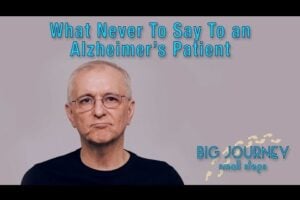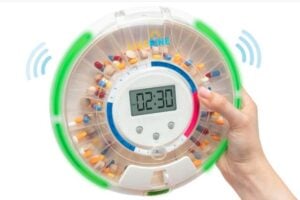
Memory Box for Dementia

SOURCE:
-
Video Tutorial produced by http://www.assisted-living-directory.com
Music Attribution:
Title: Aretes
Kevin MacLeod (incompetech.com)
Licensed under Creative Commons: By Attribution 3.0
Related:


Red Plates for Eating with Dementia

Best Alzheimer’s Pills Organizers

8 Care Tips to Boost Holiday Joy

7 Best Clocks for Dementia

Joyful Holidays Despite Dementia
By:
Peter Berger
This site was inspired by my Mom’s autoimmune dementia.
It is a place where we separate out the wheat from the chafe, the important articles & videos from each week’s river of news. Google gets a new post on Alzheimer’s or dementia every 7 minutes. That can overwhelm anyone looking for help. This site filters out, focuses on and offers only the best information. it has helped hundreds of thousands of people since it debuted in 2007. Thanks to our many subscribers for your supportive feedback.
The site is dedicated to all those preserving the dignity of the community of people living with dementia.
Peter Berger, Editor
Share this page To
Dementia Books & Videos on Amazon:
More From Alzheimer's Weekly

Arginine Deprivation: The Alzheimer’s Trigger?
REVIEW – PROGRESS THROUGH RESEARCH – VIDEO & ARTICLE: Alzheimer’s may be triggered by brain immune-system imbalances. Learn the way Duke University researchers want to

3D-Printed Brain Tissue Accelerates Alzheimer’s Research
The first 3D-printed brain tissue that can grow and function like typical brain tissue is a major breakthrough for scientists in search of an Alzheimer’s cure.

Cognitive Super Agers Defy Decline in Brainpower
NEWS: Although it’s normal for brainpower to decline as people age, studies show it’s not inevitable. Some people stay sharp into their 80s, 90s, and

Exploring Alzheimer’s & Infection
RESEARCH EXCERPT: Is Alzheimer’s caused by a germ? $1 million goes to anyone who can answer that. If the germ theory gets traction, it could
Visit Alzheimer's Weekly On
Welcome
Alzheimer’s & Dementia Weekly was inspired by my mother’s journey with autoimmune dementia and my dad’s with Parkinson’s dementia.
Walking beside them opened my eyes to the confusion, the courage, and the deep humanity found in families and professionals caring for someone they love.
Since its debut in 2007, this site has had one clear mission:
to separate the wheat from the chaff — to highlight only the most essential articles, studies, tools, and videos from the overwhelming river of dementia-related information.
(At last count, Google receives a new post on Alzheimer’s or dementia every seven minutes.) For anyone seeking clarity or support, that constant flow can be exhausting and discouraging.
Alzheimer’s Weekly filters, translates, and explains what matters most, helping hundreds of thousands of families, clinicians, and care teams around the world make sense of the latest research and best practices.
This site is dedicated to everyone who works—often quietly and tirelessly—to preserve dignity in the community of people living with dementia.
About the Editor
With experience in dementia caregiving, public education, and Alzheimer’s-focused writing—and a professional research background shaped in what many consider one of the world’s top laboratories—I work to make complex findings clear, practical, and genuinely helpful for both families and professionals providing care.
My goal is simple:
Translate the best science into guidance that lightens the load, strengthens understanding, and helps every person with dementia live with dignity.
Peter Berger
Editor, Alzheimer’s Weekly

Please be very careful hanging these on the walls. My loved one had to get nine stitches on his forehead from walking into one. Two other times he suffered two black eyes from this type of box that juts out from the wall. The Care Center had placed them all along the walls in the hallway that the residents frequently paced along. Hanging it over a dresser may help. Please choose your spot very carefully.
I agree my Husband would probably break it.I have to keep everything put up that can hurt him.I sure font want a glass cabinet.
It's easy to make a memory box without glass.
Why on earth would you create something like this behind glass? Why not keep these items in a basket or open box? Lovely idea, but this implementation isn't really practical.
If you look at the various cabinets below the video offered by Amazon, you can see that half of them use no glass (in the lower two rows). The glass is an option for situations where it is appropriate, but you can certainly do a beautiful memory box that has no glass whatsoever. Best of luck.
It’s nice to have these things on display in a way that’s easy for everyone to see. A person living with dementia may not be able to hold on to things so easily. A care person’s hands are usually full or busy.
If the objects are in a box then the resident has to go and pull them out, or ask someone else to, or just wait until someone finally does. If on display they can see their special memories all the time. It’s self-serve!
Of course, the kind of display has to work for each person’s situation and the video shows options.
Great idea if the person with dementia doesn't tear them apart, as it happed at my house.